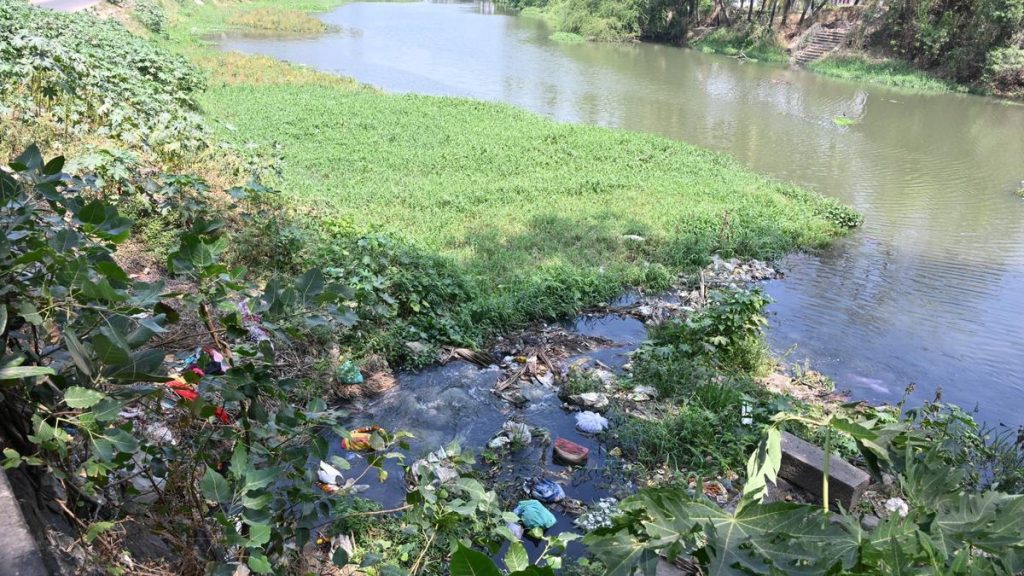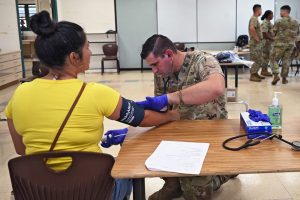
Sewage water mixing with Pazhayar river at Ozhuginasery in Nagercoil.
| Photo Credit: A. SHAIKMOHIDEEN
The rampant disposal of sewage into Pazhayar river poses a significant threat for its future, as pervasive pollution from sewage continues to damage the river’s ecosystem. The river, which carries pristine water from the Western Ghats has become excessively polluted and encroached due to rapid urbanisation and negligence by both public and authorities in maintaining the river.
Pazhayar river originates from the northern slopes of Western Ghats in the forested area of Surulacode region, flows for 35 km through Thovalai and Agasteeswaram taluks and eventually confluences in Manakudy estuary.
It serves as the major irrigation source for the agricultural lands in “Nanjilnadu”, term used to refer to the combined farmlands of Agasteeswaram and Thovalai taluks.
The river has been significantly affected by pollution majorly between the Putheri and Suchindram regions, where the water visibly changes into a dark hue indicating severe contamination.
The situation worsens near the Ozhuginasery region, where sewage connections have been illegally linked into the river. Though the Nagercoil Corporation makes efforts to prevent sewage from draining into the river, the illegal connections remain rampant, severely disrupting the ecosystem of the river.
A. Vins Anto, a functionary of Kodayar Basin Irrigation System, Nagercoil, said that the issue had been raised every month at the farmers’ grievance meeting, but stringent measures to protect the river had been delayed every time.
He added that the river has 11 check dams and most of which are in deteriorated conditions and are in dire need of restoration. He highlighted that in addition to sewage contamination, the river is also being affected by encroachments in most of the places in urban regions.
A report published by The Hindu, June 3, 2012 stated that the Pazhayar off Nagercoil has 3,000 units of pathogenic bacteria of echeriacoli. As per international standards, only 3 units of e-coli are permissible in rivers where the people take bath.
Though more than a decade has passed since this report, the situation has not improved, but worsened.
Vidhubala from Uvakai organisation, which has been consistently involved in assessing the condition of waterbodies in the Tirunelveli and Kanniyakumari districts, said that the river is excessively contaminated after the Ozhuginasery bridge.
She added that one of the major anicuts of the river Sabari anicut is in the condition where it has been blocked by sewage and water hyacinth and which had turned into a conduit for polluted water.
Arumugam, a farmer from Kothaigramam, said, “The riverbanks, where hundreds of people once bathed, have now turned into a pool of sewage water and it is deeply saddening.”
He added that the river should be brought back to its original condition before it becomes irreversibly damaged.
The farmers and activists of the district urged the government to take immediate steps to restore the river and to renovate its check dams.
Published – February 16, 2025 06:57 pm IST








